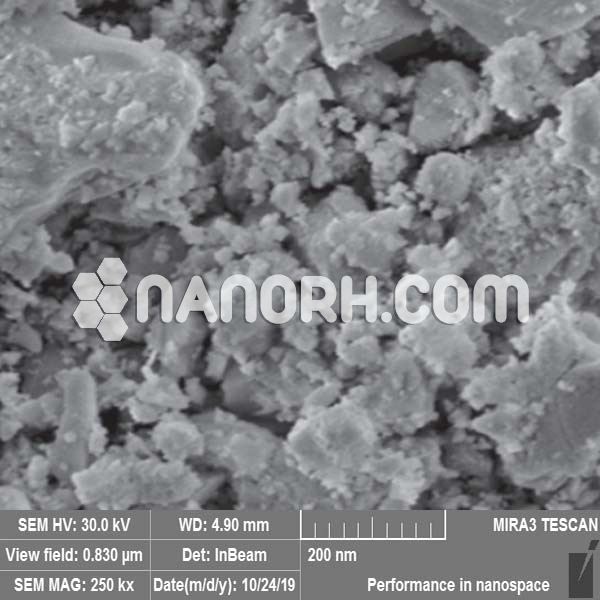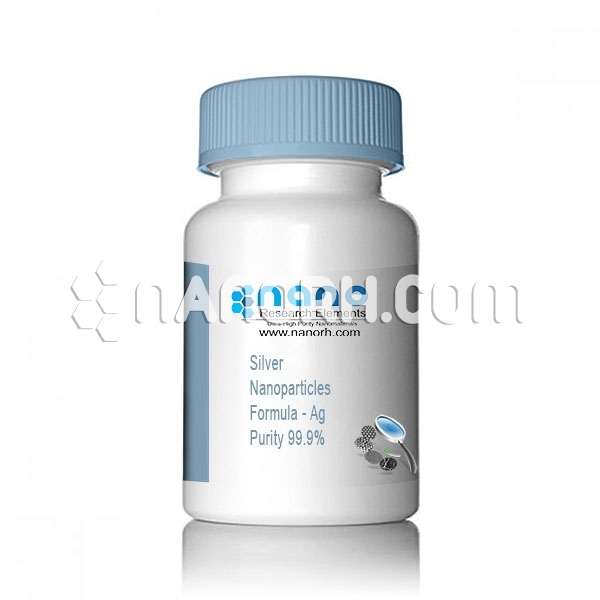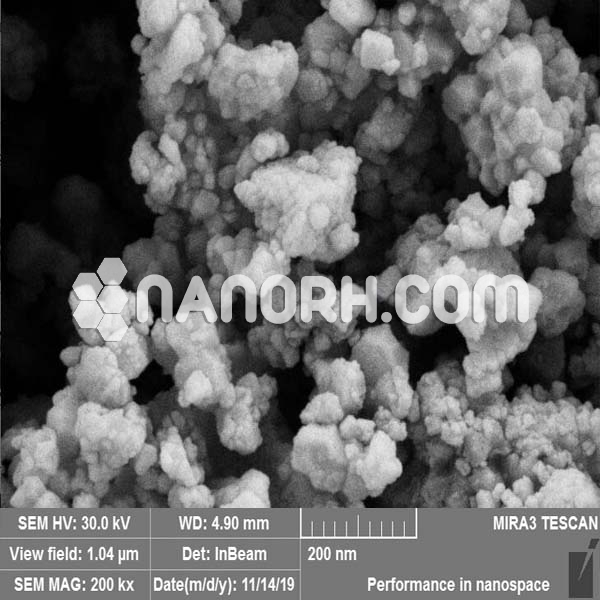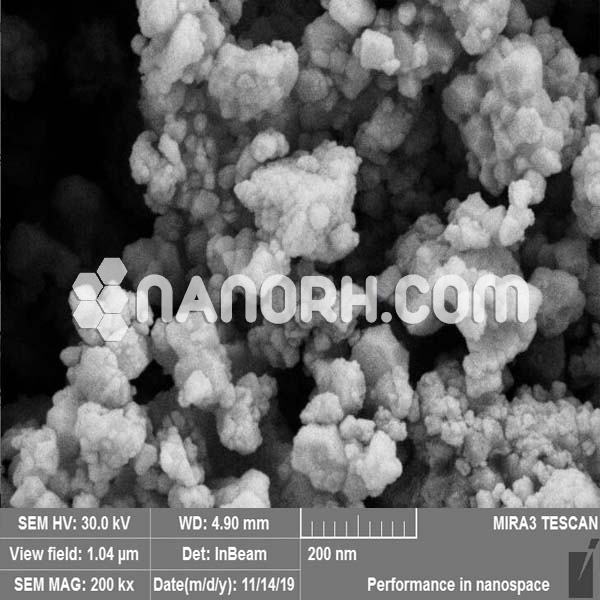| Hafnium Nanoparticles | |
| Product No | NRE-1017 |
| CAS No. | 7440-58-6 |
| Formula | Hf |
| APS | <100nm (Can be Customized) |
| Purity | 99.9% |
| Color | Grey |
| Molecular Weight | 178.49 g/mol |
| Density | 13.31 g/cm3 |
| Melting Point | 2233 °C |
| Boiling Point | 4603 °C |
Hafnium Nanoparticles
Hafnium nanopowder, consisting of hafnium particles at the nanoscale, possesses unique properties and finds various applications in both industrial and research fields. Some of the notable applications of hafnium nanopowder include:
Nuclear Reactor Control Rods: Hafnium is known for its exceptional neutron-absorbing properties. In nuclear reactors, hafnium nanoparticles or hafnium-based compounds are used in control rods to regulate the rate of nuclear fission and prevent overheating.
High-Temperature Alloys: Hafnium nanopowder can be incorporated into high-temperature alloys, such as those used in aerospace and gas turbine engines. Its high melting point and ability to improve the high-temperature stability of materials make it valuable in these applications.
Catalysis: Hafnium nanoparticles have been explored as catalysts in various chemical reactions. Their high surface area and unique electronic properties can enhance catalytic activity and selectivity in reactions, including hydrogenation and oxidation processes.
Electrodes in Microelectronics: Hafnium oxide (HfO2) nanoparticles are used as dielectric materials in microelectronics, especially in the production of advanced transistors. They are employed as gate dielectrics due to their high dielectric constant and thermal stability.
Scintillation Detectors: Hafnium compounds, when doped with other elements, can be used in scintillation detectors to measure ionizing radiation. These detectors are widely employed in nuclear physics experiments and radiation monitoring.
Superconductors: Hafnium-based materials, often in nanopowder form, have been investigated for their potential as high-temperature superconductors. While significant research is ongoing, the use of hafnium in this context could revolutionize electrical transmission and storage technologies.
Ceramics and Coatings: Hafnium oxide nanoparticles can be used in the production of ceramics and coatings with enhanced thermal and mechanical properties. They are used in aerospace components, turbine blades, and other high-performance applications.
Biomedical Applications: Hafnium nanoparticles have been explored for their potential in drug delivery systems, especially in cancer therapy. Their unique properties can help in targeted drug delivery and imaging applications.
Research and Development: Hafnium nanopowder is frequently used in research laboratories for its diverse properties. Researchers explore its behavior in different environments and use it as a component in experimental materials and devices.
Additive Manufacturing (3D Printing): Hafnium nanopowders can be used in additive manufacturing techniques like 3D printing to produce complex and high-performance parts, especially in aerospace and medical device manufacturing.




